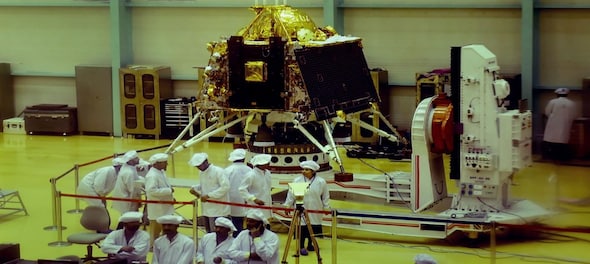
The much-awaited soft landing of Chandrayaan-3 on the Moon’s surface is scheduled on August 23. As the country eagerly waits for the historic moment, it could be surprising for many to know that in 2008 India executed a daring crash landing of its spacecraft on the surface of the Moon, the first such attempt that reshaped the future of lunar exploration missions for Indian Space Research Organisation (ISRO).
The Chandrayaan mission embarked on a journey in 2008 to explore the lunar landscape. While only a handful of nations had previously attempted such feats, India was about to make a pioneering move. The Chandrayaan spacecraft carried the ‘Moon Impact Probe,’ a 32-kilogram device designed to intentionally crash onto the lunar surface, according to reports.
On the evening of November 17, 2008, scientists at ISRO initiated a sequence of commands that propelled the Moon Impact Probe towards its destination. At an altitude of 100 km above the Moon's surface, the probe embarked on its final descent. Its spin-up rockets started guiding it towards a calculated impact point.
Within its compact frame, the spacecraft housed three vital instruments: a video imaging system, a radar altimeter and a mass spectrometer. These instruments were tasked with exploring the Moon's mysteries and transmitting crucial data back to ISRO.
The video imaging system captured visual data, sending images back to Earth for analysis. The radar altimeter was designed to track the probe's descent rate. Meanwhile, the mass spectrometer analysed the sparse lunar atmosphere.
However, approximately 25 minutes after being released from the Chandrayaan orbiter, the Moon Impact Probe concluded its mission in a resounding manner – a controlled crash onto the Moon's surface. India had achieved an unprecedented feat, becoming the first nation to deliberately crash a spacecraft onto another celestial body.
This manoeuvre was not merely an act of scientific bravado as it yielded remarkable revelations. The data transmitted by the impact probe had profound implications. Most notably, during its 25-minute descent, the probe detected signs of water on the lunar surface. This ground-breaking discovery shattered long-held beliefs and later received validation from NASA's Moon Mineralogy Mapper.
The impact of that historic crash landing is evident today. The data collected from the Moon Impact Probe laid the foundation for subsequent missions, including Chandrayaan-2 in 2019 and the current Chandrayaan-3.
(Edited by : Sudarsanan Mani)
Check out our in-depth Market Coverage, Business News & get real-time Stock Market Updates on CNBC-TV18. Also, Watch our channels CNBC-TV18, CNBC Awaaz and CNBC Bajar Live on-the-go!


2024 Lok Sabha elections | Rahul Gandhi in Rae Bareli, why not Amethi
May 4, 2024 9:43 AM
Supreme Court says it may consider interim bail for Arvind Kejriwal due to ongoing Lok Sabha polls
May 3, 2024 4:57 PM
10% discount on fare on Mumbai Metro lines 2 and 7A on May 20
May 3, 2024 2:40 PM

